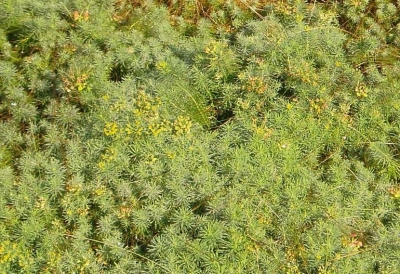Noxious Weed Impact
Effects of Weeds on Cropland and Forage Production
In 1984, $7.4 billion and $909 million loss caused by weeds were recorded in 64 U.S and 34 Canadian Crops respectively. Cattle rearing capacity has been significantly reduced by 75% and 63% in Montana and North Dakota respectively.
In 1984 alone, forage loss caused by knapweed infestation in Montana were worth over $4.5 million, and if the weed is allowed to spread at the current pace, nothing less than 33 million acres will be affected by 2009 causing an annual forage loss of over $155 million
Effects of Weeds on Water Quality as Soil Stability
Areas where large acres of grasses have been displaced by tap-rooted plants, experiences soil and water loss. For example, the presence of spotted knapweed has proven to have an adverse effect on soil and water resources in Montana. The study reveals that spotted knapweed dominated fields have much more eroded soils when compared to bunchgrass-dominated fields. There is also a reduced infiltration of water into the soil profile. This is believed to have been a leading factor for the replacement of native grass, as the presence of spotted knapweed has tampered with the water-soil relationship. The long term effect is a higher sedimentation of rivers, lakes and streams and which will negatively affect fisheries.
Effects Of Weeds On Wildlife Forage and Habitat
There is no defined or clear path understanding of the impacts of noxious weeds on wildlife. However we could lay our hands on some findings, and the effect seems to be mostly negative.
Species diversity and impact on native plant habitat:
A lot of noxious weeds infest plant communities, and this may result in monocultures which apparently create negative impacts on the U.S native biological diversity.
Although there is no defined or documented impact of noxious weeds, scientists have spent a lot trying to unravel how to manage weeds as well as understanding their ecology, biology, and effects. However, because of the lack of biotic pressure mounted on alien crops population – no effective biological control measure- aggressive noxious plants are displacing native plants.
This is exacerbated by the increase in the spread of exotic weeds and the difficulty in controlling all level of infestation in a single year as a result of the high infestation and widespread.
Effect of Weeds on Open Spaces
Open spaces are the major hit of alien weed infestation. Such bare spaces in counties and cities are usually abandoned farmlands or former grazing lands. These lands have suffered some level of disturbance and are subject to weed invasion. Infestations on such open lands give room for the spread of infestation on adjacent or a distant land.



Comments are closed.